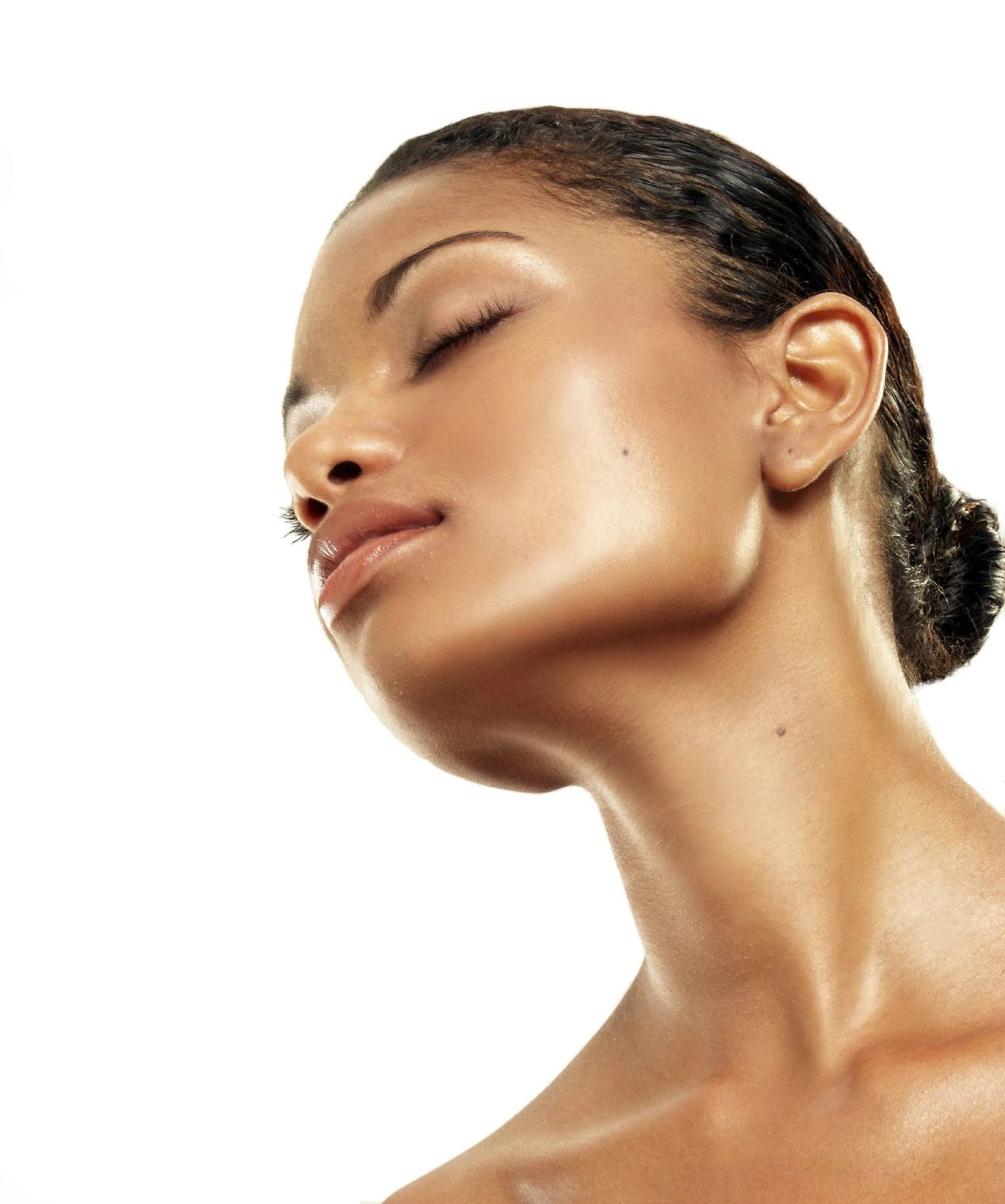Our skin naturally exfoliates dead cells every day, but over time this shedding process slows down primarily as a result of age and unprotected sun exposure. This results in dull, dry, or flaky skin; clogged, enlarged pores; bumps, wrinkles, loss of firmness, and uneven skin tone. Gently helping skin exfoliate reveals the beautiful, soft, hydrated skin beneath. (Read more about Skin Exfoliation here)
Hydroxy acids are chemical exfoliants that work by weakening the ‘cellular glue’ (desmosomes) that holds dead skin cells together, encouraging exfoliation and revealing healthy, younger skin cells. Hydroxy acids fit into two main categories: Alpha hydroxy acids (AHAs) and Beta hydroxy acid (BHAs). Both groups of acids are naturally derived from various foods (e.g., sour milk, sugarcane) and plant-based sources (e.g., willow bark). They also work similarly, but each one produces slightly varied results. AHAs are water-soluble (dissolves in water) and BHA is oil-soluble, which makes BHA more effective on oily skin. Hydroxy acids at medium to higher concentrations can also function beyond the surface of the skin and work in the epidermal and dermal layers to deliver additional results, such as stimulate cell renewal, boost collagen production, hydration and melanin suppression.
Alpha Hydroxy Acid (AHA)
Alpha hydroxy acids are a group of compounds derived from food products including glycolic acid (from sugar cane), lactic acid (from sour milk), malic acid (from apples), citric acid (from fruits) and tartaric acid (from grape wine). The most effective, common and well researched are glycolic acid and lactic acid. AHAs have benefits for all skin types like diminishing the look of fine lines/wrinkles, improving skin’s firmness, texture and tone, also hydrating and improving visible signs of sun damage. These acids are great for sun-damaged and dry skin because they increase cell turnover and trigger faster collagen production for smoother, younger-looking skin.
Glycolic Acid: It has been considered to be the best-performing AHA, as the smallest hydroxyl acid molecule, it can penetrate the skin deepest and fastest. It has shown to be the most effective at stimulating collagen production, thus promoting deeper wrinkle reduction. It can also clear sunspots by accelerating cell turnover and directly inhibiting melanin production. It is important to know that glycolic acid can be more irritating than other AHAs because it penetrates quickly so it may not be tolerated well by sensitive skin types.
Lactic Acid: Like glycolic acid, lactic acid exfoliates and increases moisture levels in the top layer of the skin. It is gentler than glycolic acid because it has larger molecules so it does not penetrate as much, making it more ideal for sensitive skin.
Research has shown that AHA exfoliants containing glycolic or lactic acid in concentrations between 5% and 10% at a pH between 3 and 4 are ideal for optimal, youth-reviving, non-irritating exfoliation.
Beta Hydroxy Acid (BHA)
Beta Hydroxy Acids, the most common of which is Salicylic Acid, is derived from willow tree bark. Because salicylic acid is lipophilic (attracted to oil), it is able to penetrate the oils in the skin/pores and clear out follicles of excess debris and skin cells, making it ideal for oily or pore-clogged skin. It is anti-inflammatory and helps prevent acne lesions from forming, and contain the same antioxidant and anti-aging effects as AHAs. It is important to note that salicylic acid has not been shown to kill Propionibacterium Acnes (the most common bacteria that leads to acne). For this reason, salicylic acid is often paired with other antibacterial ingredients or benzoyl peroxide for best results.
The pH of any BHA exfoliant is crucial. Salicylic Acid works best at a pH between 3 and 4, so any product not adhering to this pH range will be less effective or ineffective. It is recommended that a salicylic acid formulation should contain between 1% and 2% (higher concentrations for more advanced concerns).
Poly Hydroxy Acid (PHA)
Poly hydroxy acids are a third-generation of peeling ingredient that is just as effective, but less irritating than AHAs. They promote a mild peeling by acting at a top surface level to smooth skin and improve overall tone. PHAs are also known for attracting moisture to prevent skin moisture loss while effectively exfoliating. The great thing about PHAs is that, since they have a larger molecular structure, which limits how deeply it penetrates into the skin, they are gentler on the skin. Some common PHAs are: lactobionic acid, galactose and gluconolactone.
Please Note: When choosing a product for chemical exfoliation – with each category, start with a low percentage. If you experience stinging initially with a leave-on product, you can mix it with a moisturizer first, until you get used to it. Start by using it once or twice a week and see how your skin responds to it. Any time you’re working with hydroxy acids in your routine, it is important that you give them time to work on the skin. Using hydroxy acids may increase your skin’s sensitivity to the sun and particularly the possibility of sunburn, ensure you use a sunscreen (SPF 30 and above), wear protective clothing, and limit sun exposure while using them.
There are AHA and BHA products available for sale here.
PHOTO CREDIT: Garcons World


